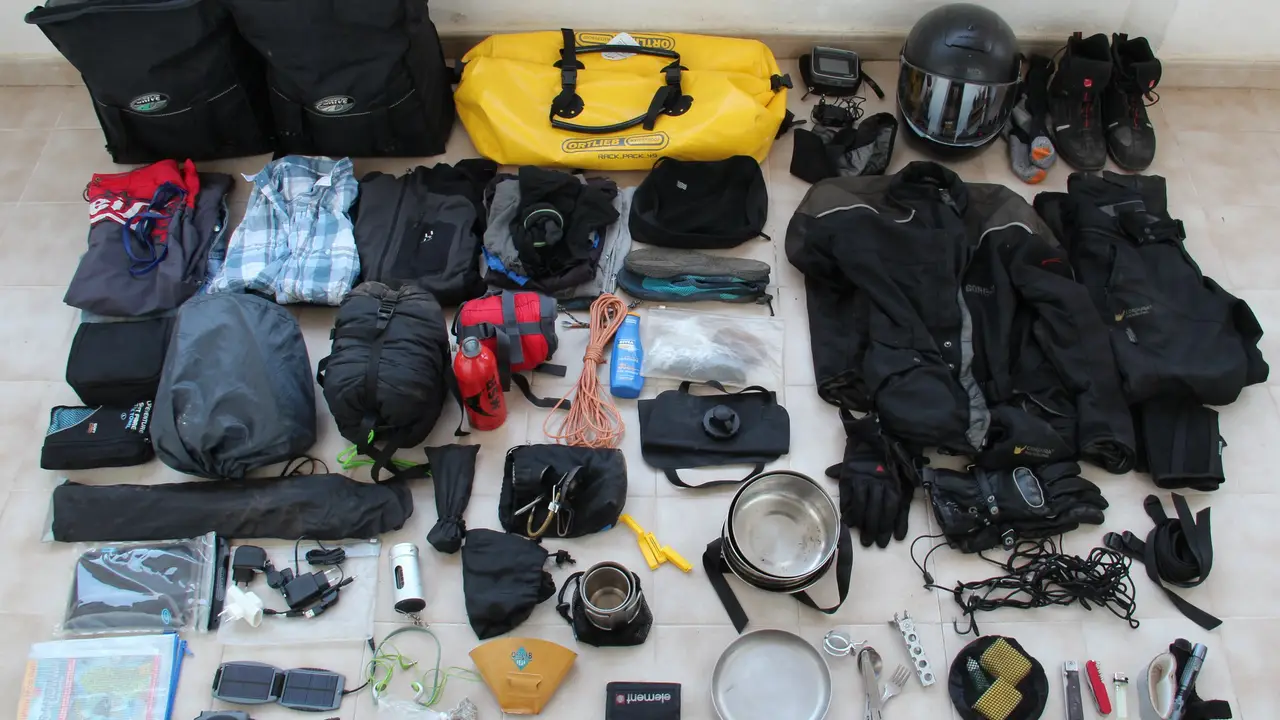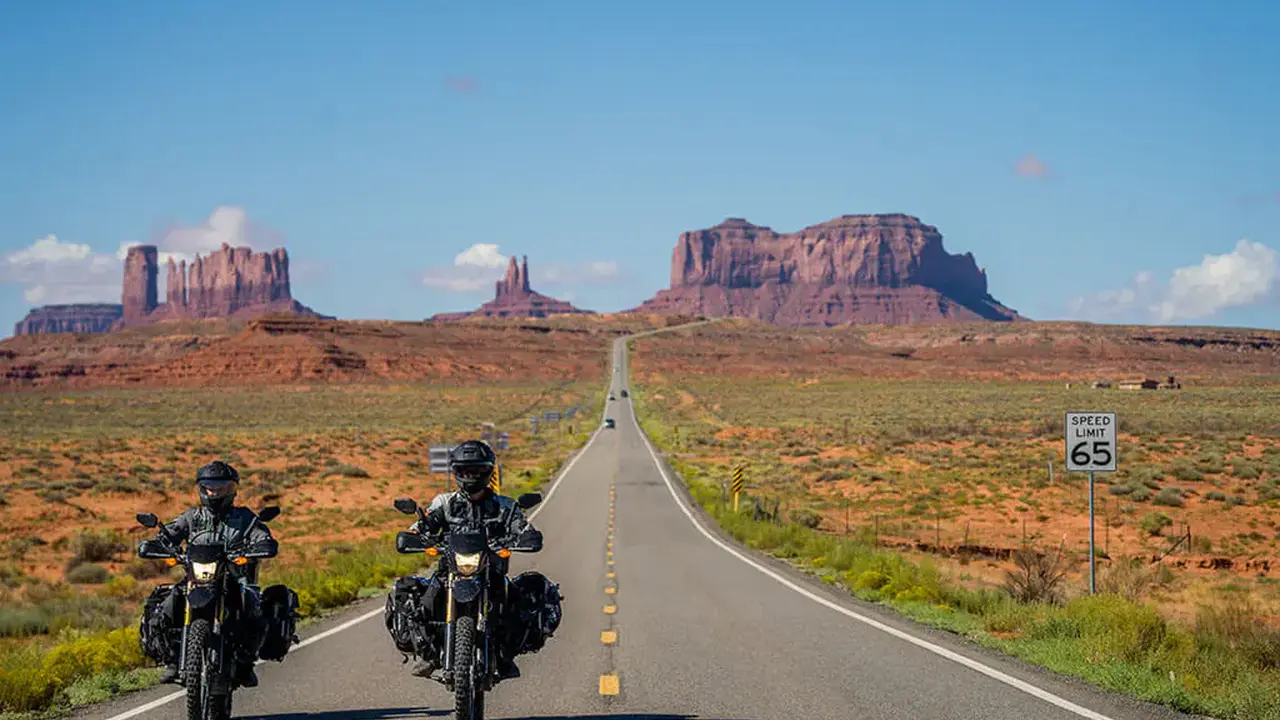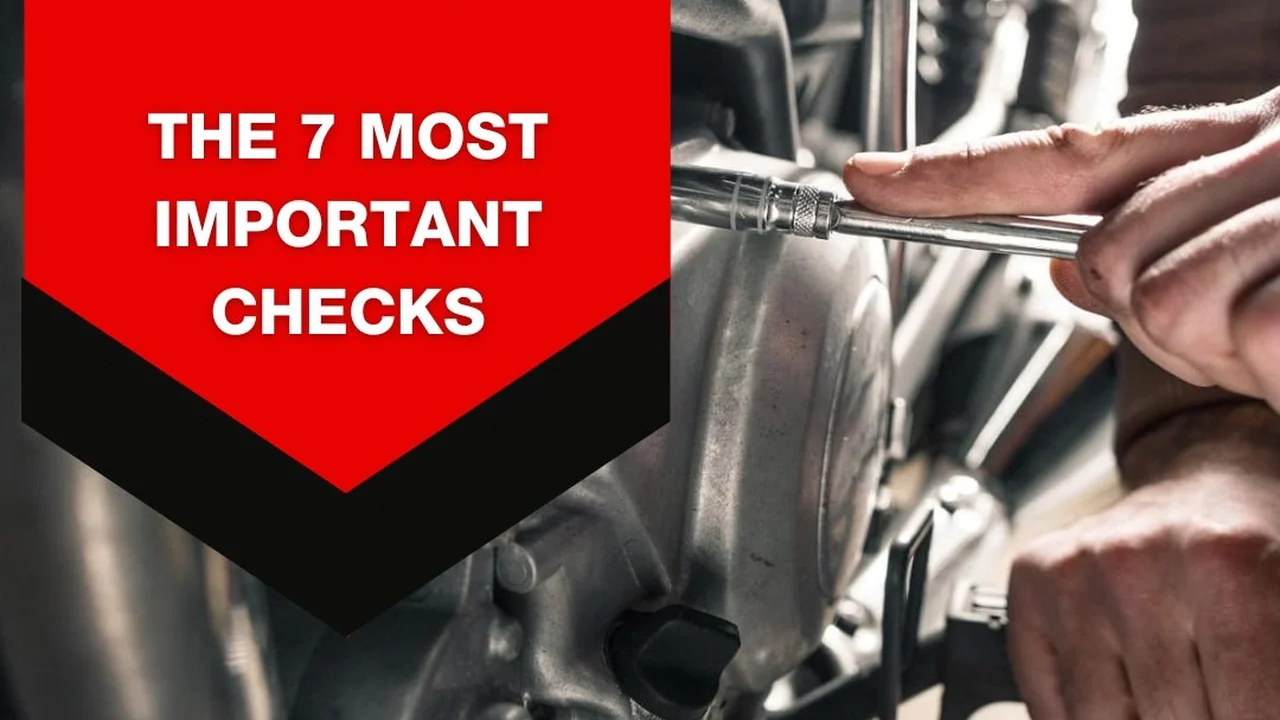ADV Motorcycle Cornering: Mastering the Basics
Riding techniques and skills are essential for any adventure motorcycle rider looking to improve their control and confidence on the road and off. Mastering cornering techniques is paramount for safe and enjoyable riding, allowing you to navigate various terrains with ease. This guide will cover the fundamental principles of ADV motorcycle cornering, offering practical tips, product recommendations, and comparisons to enhance your riding experience.

Cornering on an ADV (Adventure) motorcycle can feel different than on a sportbike or cruiser. The higher center of gravity, longer suspension travel, and often knobby tires require a slightly different approach. Let's break down the core elements to help you carve those corners like a pro.
Understanding Lean Angle and Body Position for ADV Cornering Techniques
Lean angle is the degree to which you and your bike are tilted relative to the vertical. A greater lean angle allows you to maintain a tighter radius at a given speed. However, lean angle is only one part of the equation. Body position plays a crucial role in maintaining stability and control.
Body Positioning: For most ADV riding situations, a neutral or slightly inside lean is recommended. This means your body is either aligned with the bike or slightly leaning into the turn. This helps maintain a lower center of gravity and provides better feedback from the tires. Avoid excessive "hanging off" the bike, as this can upset the bike's balance, especially on loose surfaces.
Countersteering: This is the fundamental principle of turning any motorcycle. To initiate a turn, you gently push on the handlebar in the direction you want to go. Pushing the right handlebar will cause the bike to lean to the right, and vice versa. It might seem counterintuitive, but it's how motorcycles are designed to turn.
Looking Through the Turn: Always look where you want to go. Your eyes will naturally guide your body and the motorcycle. This is especially important in off-road situations where you need to anticipate obstacles and changes in terrain.
Throttle Control and Braking for Smooth ADV Motorcycle Cornering
Smooth throttle control and proper braking techniques are essential for maintaining stability and traction in corners. Abrupt changes in throttle or braking can upset the bike's balance and lead to loss of control.
Throttle Control: Maintain a steady throttle input through the corner. Avoid chopping the throttle or accelerating aggressively, as this can cause the suspension to compress or extend suddenly, affecting your stability. Use a light touch and gradually increase or decrease throttle as needed.
Braking: Ideally, you should complete most of your braking before entering the corner. Trail braking, which involves lightly applying the brakes while leaning into the turn, can be used to fine-tune your speed and maintain stability. However, it requires practice and skill. Use caution when trail braking, especially on loose surfaces.
ABS (Anti-lock Braking System): Most modern ADV bikes come equipped with ABS. This system prevents the wheels from locking up under hard braking, allowing you to maintain steering control. However, ABS is not a substitute for good braking technique. Practice using ABS in a controlled environment to understand its limitations.
Cornering Techniques on Different Surfaces: On-Road vs. Off-Road ADV Riding
The techniques you use for cornering will vary depending on the surface you're riding on. On paved roads, you can typically lean the bike more and use more aggressive body positioning. Off-road, you need to be more cautious and adapt your technique to the terrain.
On-Road Cornering: On paved roads, you can use a combination of lean angle and body positioning to negotiate corners. Smooth throttle control and braking are essential. Be aware of road conditions and adjust your speed accordingly.
Off-Road Cornering: Off-road cornering requires a different approach. Stand up on the pegs to lower your center of gravity and improve your visibility. Use your body weight to steer the bike and maintain balance. Be prepared to slide and drift, and use the throttle to control your traction.
Gravel and Loose Surfaces: On gravel and loose surfaces, it's important to maintain a light touch on the handlebars and let the bike move around underneath you. Avoid abrupt changes in throttle or braking, as this can easily lead to a loss of control. Use your body weight to steer the bike and maintain balance.
Sand: Riding in sand requires a different set of skills. Keep your weight back and maintain a steady throttle input. Use your body weight to steer the bike and keep it pointed in the right direction. Be prepared to slide and drift, and don't be afraid to use the throttle to power through the sand.
ADV Motorcycle Tire Selection for Optimal Cornering Performance
Tire choice significantly impacts cornering performance on an ADV motorcycle. Different tires are designed for different types of terrain and riding styles. Consider your primary riding environment when selecting tires.
Tire Types:
- Street-biased Tires: Offer excellent grip and handling on paved roads but may struggle in off-road conditions.
- Dual-Sport Tires: Provide a compromise between on-road and off-road performance. They offer decent grip on pavement and can handle moderate off-road terrain.
- Knobby Tires: Designed for maximum off-road traction. They provide excellent grip in dirt, gravel, and sand but can be noisy and less comfortable on paved roads.
Recommended Tires:
- Continental TKC 80 Twinduro: A popular choice for riders who spend a significant amount of time off-road. Provides excellent grip in dirt, gravel, and sand. Price: $150-$250 per tire.
- Heidenau K60 Scout: A long-lasting dual-sport tire that offers good performance on both paved and unpaved roads. Price: $180-$280 per tire.
- Michelin Anakee Adventure: A versatile tire that provides excellent grip on paved roads and decent performance in light off-road conditions. Price: $160-$260 per tire.
Tire Pressure: Maintaining proper tire pressure is crucial for optimal cornering performance. Consult your motorcycle's owner's manual for recommended tire pressures. Lower tire pressures are typically used for off-road riding to improve traction, while higher pressures are used for on-road riding to improve fuel economy and handling.
Suspension Setup and Adjustments for Improved ADV Cornering
Proper suspension setup is essential for achieving optimal cornering performance on your ADV motorcycle. Adjusting your suspension can improve handling, stability, and comfort.
Suspension Components:
- Front Forks: Control the front wheel's movement and provide damping to absorb bumps and impacts.
- Rear Shock: Controls the rear wheel's movement and provides damping to absorb bumps and impacts.
- Preload: Adjusts the initial compression of the springs, affecting the ride height and stiffness of the suspension.
- Rebound Damping: Controls the speed at which the suspension returns to its extended position after being compressed.
- Compression Damping: Controls the speed at which the suspension compresses when encountering a bump or impact.
Suspension Adjustments:
- Adjusting Preload: Increasing preload will raise the ride height and make the suspension stiffer. Decreasing preload will lower the ride height and make the suspension softer.
- Adjusting Rebound Damping: Increasing rebound damping will slow down the suspension's return, preventing it from bouncing excessively. Decreasing rebound damping will speed up the suspension's return, allowing it to react more quickly to bumps.
- Adjusting Compression Damping: Increasing compression damping will stiffen the suspension's response to bumps and impacts. Decreasing compression damping will soften the suspension's response.
Professional Suspension Tuning: If you're unsure how to adjust your suspension, consider consulting a professional suspension tuner. They can help you dial in your suspension for your specific riding style and terrain.
Product Recommendations: Enhancing Your ADV Cornering Experience
Several products can enhance your ADV cornering experience, providing improved control, comfort, and safety.
Handlebar Risers: Handlebar risers raise the handlebars, allowing for a more comfortable and upright riding position. This can improve control and reduce fatigue, especially during long rides. Rox Speed FX Adjustable Handlebar Risers (Price: $80-$150) are a popular choice.
Wider Foot Pegs: Wider foot pegs provide a larger platform for your feet, improving stability and control, especially when standing up. IMS Adventure Foot Pegs (Price: $100-$200) are a good option.
Crash Bars: Crash bars protect your motorcycle's engine and frame in the event of a fall. They can also provide mounting points for accessories such as auxiliary lights and panniers. Touratech Crash Bars (Price: $200-$400) are a reliable choice.
Handguards: Handguards protect your hands from wind, rain, and debris. They can also prevent damage to your levers in the event of a fall. Barkbusters Handguards (Price: $100-$200) are a popular option.
Comparing ADV Motorcycle Accessories for Cornering Improvement
Choosing the right accessories can significantly improve your ADV cornering experience. Here's a comparison of some popular options:
Handlebar Risers:
- Rox Speed FX Adjustable Handlebar Risers: Adjustable height and angle, allowing for a customized riding position.
- SW-MOTECH Handlebar Risers: Solid construction, easy to install.
- Pro Taper Handlebar Risers: Lightweight and durable.
Wider Foot Pegs:
- IMS Adventure Foot Pegs: Wide platform, aggressive teeth for improved grip.
- Pivot Pegz Mark 4: Pivoting design allows for more natural ankle movement.
- Fastway Evolution Air Foot Pegs: Lightweight and adjustable.
Remember to consider your individual needs and preferences when selecting accessories for your ADV motorcycle. Experiment with different options to find what works best for you.
So, get out there, practice these techniques, and enjoy the thrill of mastering cornering on your ADV motorcycle! With the right skills and equipment, you'll be carving corners with confidence and control in no time.
:max_bytes(150000):strip_icc()/277019-baked-pork-chops-with-cream-of-mushroom-soup-DDMFS-beauty-4x3-BG-7505-5762b731cf30447d9cbbbbbf387beafa.jpg)






